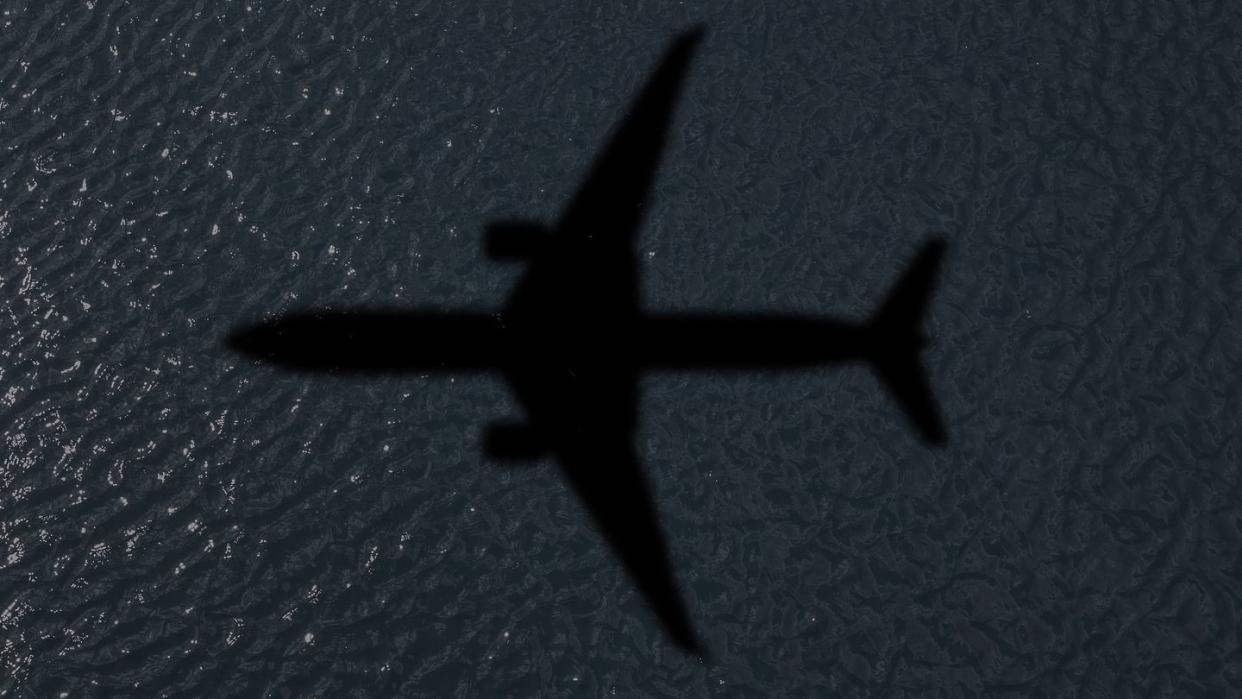A New Scientific Method May Finally Locate Flight MH370

"Hearst Magazines and Yahoo may earn commission or revenue on some items through these links."
A Cardiff University researcher believes that underwater acoustics could reveal where Malaysian Airlines Flight MH370 crashed.
Experiments using controlled explosions could better reveal the signature sound made when the flight impacted the ocean in 2014.
Analyzing sounds from the time of the crash has so far yielded no new information.
A few well-placed underwater microphones could tell us the final resting place of downed Malaysian Airlines Flight 370 (MH370). Now lost for 10 years, those searching for the missing aircraft have come no closer to understanding where the plane and its 239 passengers and crew on board ended up.
We’ve all heard the quips asking if a tree falling in the forest makes a sound if nobody is there to hear it. But in the case of a catastrophic crash or explosion in an ocean—such as a plane crashing or a submarine exploding—there’s a distinct pressure signal, more commonly known as a sound wave. And there’s often an underwater microphone—known as a hydrophone—there to pick up the signature.
Finding that singular sound from March 2014 could help isolate exactly where flight MH370 now rests.
“Our analysis shows clear pressure signals from previous aircraft crashes were detected on hydrophones,” said Usama Kadri from Cardiff University’s School of Mathematics in a news release, “even at distances exceeding 3,000 kilometers.”
So far, though, Kadri’s research hasn’t yielded new information about the whereabouts of MH370, which left Kuala Lumpur at night en route to Beijing. But he believes there’s still hope, with a few potential experiments leading the way.
Official investigations concluded that MH370 must have crashed near the 7th arc—the point at which the last communication between the plane and INMERSAT occurred. Kadri started pouring over more than 100 hours of data captured by hydrophones, and then analyzed 10 historical aircraft accidents and one submarine disappearance.
In his findings, published in the journal Scientific Reports, he shows that violent ocean impacts like the impact of flight MH370 (which would have been equivalent to a small earthquake) produce distinct acoustic signatures that travel through water and get recorded by hydrophone technology located throughout the world.
Initial research has focused on hydrophone data captured near the 7th arc during what would likely have been the final stage of MH370’s path in the Southern Indian Ocean. Kadri also investigated sounds from the Gulf of Thailand that occurred around the time of the final communication from the plane. Only a single, relatively weak six-second signal that matched both the time and the area of the potential crash site was identified.
So, while the initial data—thanks in large part to a hydroacoustic station at Cape Leeuwin, Australia, roughly 1,250 miles away from the 7th arc—didn’t reveal any actionable data, there may still be a way to find some.
The study suggests that authorities should conduct field experiments using controlled explosions or air guns in the same vicinity and with similar energy levels as the potential crash in order to monitor the sounds using hydroacoustic stations. The sounds produced in the experiment could show if any other signals from the time of the crash are related to MH370.
“Similar exercises were performed in the search and rescue mission for the ARA San Juan, a submarine that vanished of the coast of Argentina in 2017,” Kadri said. “This shows us that it is relatively straightforward and feasible and could provide a means to determine the signal’s relevance to MH370, prior to resuming with another extensive search.”
He added that if sounds are found related, it would “significantly narrow down, almost pinpoint, the aircraft’s location.” Of course, if there’s no relatable data, it may force authorities to again reassess the timing or location established in the official search.
“The aim is to encourage pertinent authorities to implement actions that could reveal insights into the destiny of MH370 specifically,” the study says.
“Unfortunately, we’ve been unable to find a signal with the certainty needed to launch a new search for the missing aircraft,” Kadra said. “However, if the recommendations are followed by the appropriate authorities, we can assess the relevance of the observed signals, potentially shedding light on the location of MH370.”
You Might Also Like

